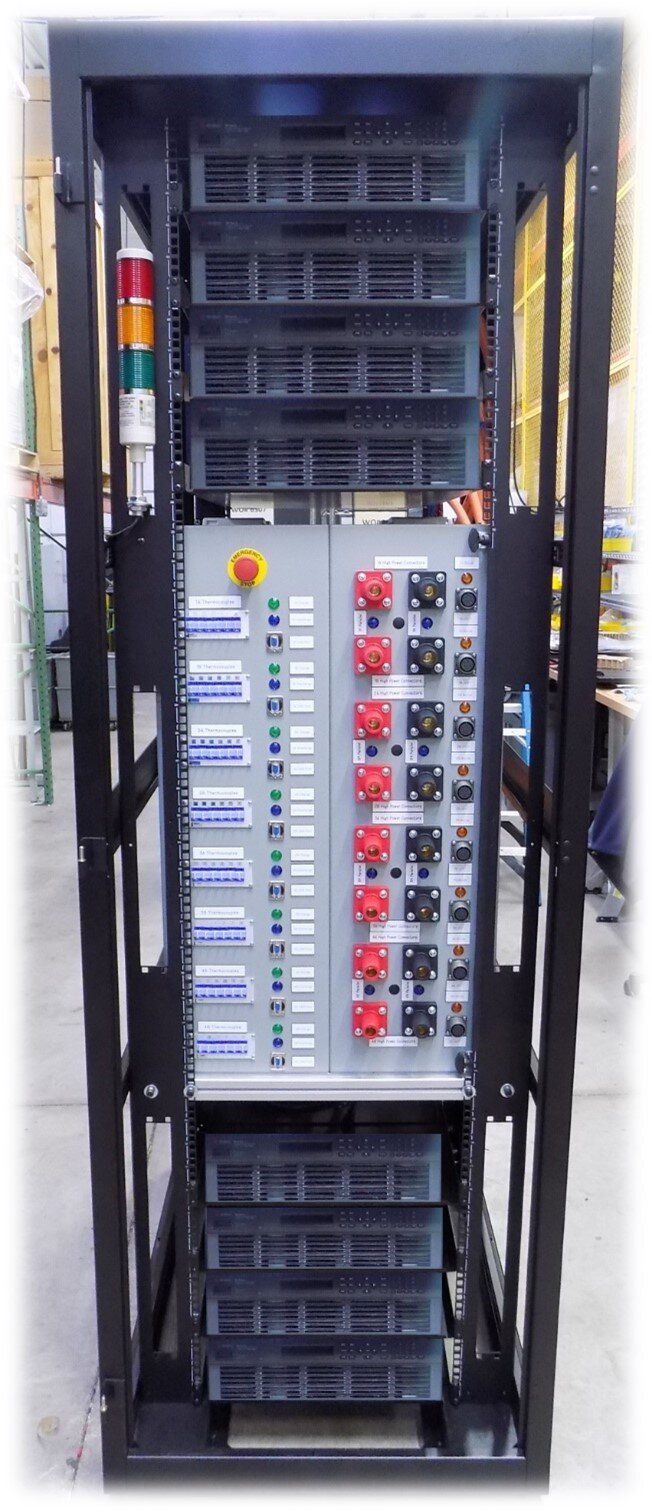
Design and Architecture
Based on the client's requirements, DMC decided to leverage the NI software and hardware platforms for this project. NI TestStand was used as the test executive to provide configurable sequencing in the application. TestStand was wrapped in a LabVIEW operator interface and programmed using DMC’s Flex Framework and object-oriented best practices. LabVIEW also provided the core PC application structure and sequence-step functionality.
For maximum reliability, we utilized NI compact RIOs to implement control battery device communication and system IO within a real-time operating system. NI VeriStand served as the backbone of the real-time control layer, which minimized development time by building upon a well-established and powerful foundation of standard DAQ, control, monitoring, and logging functions.
Electrical Panel Layout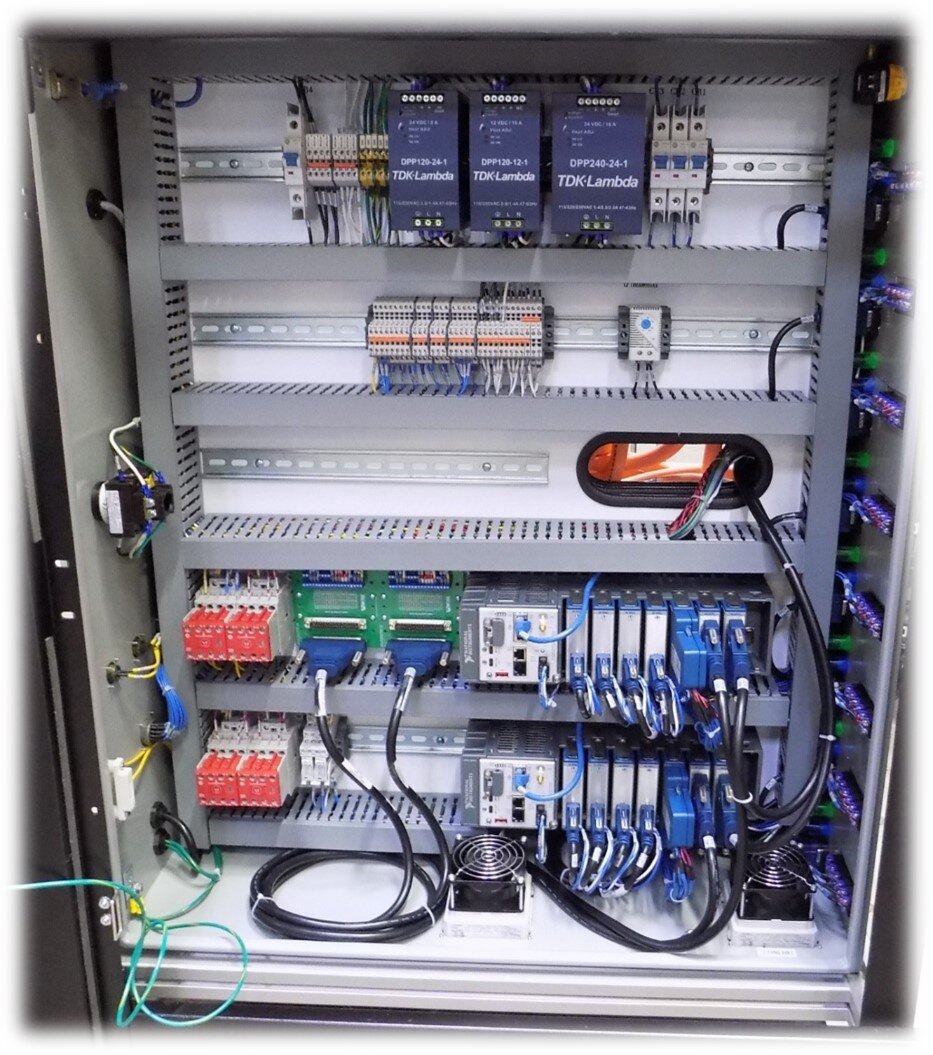
- High-Power Panels
- High-power relays
- Impedance-matched high-power cabling
- Fusing infrastructure
- Fan cooling
- Low-Power Panel
- NI-XNET CAN communication
- Real-time control (cRIO-9049 x2)
- Thermocouple inputs
- Digital IO
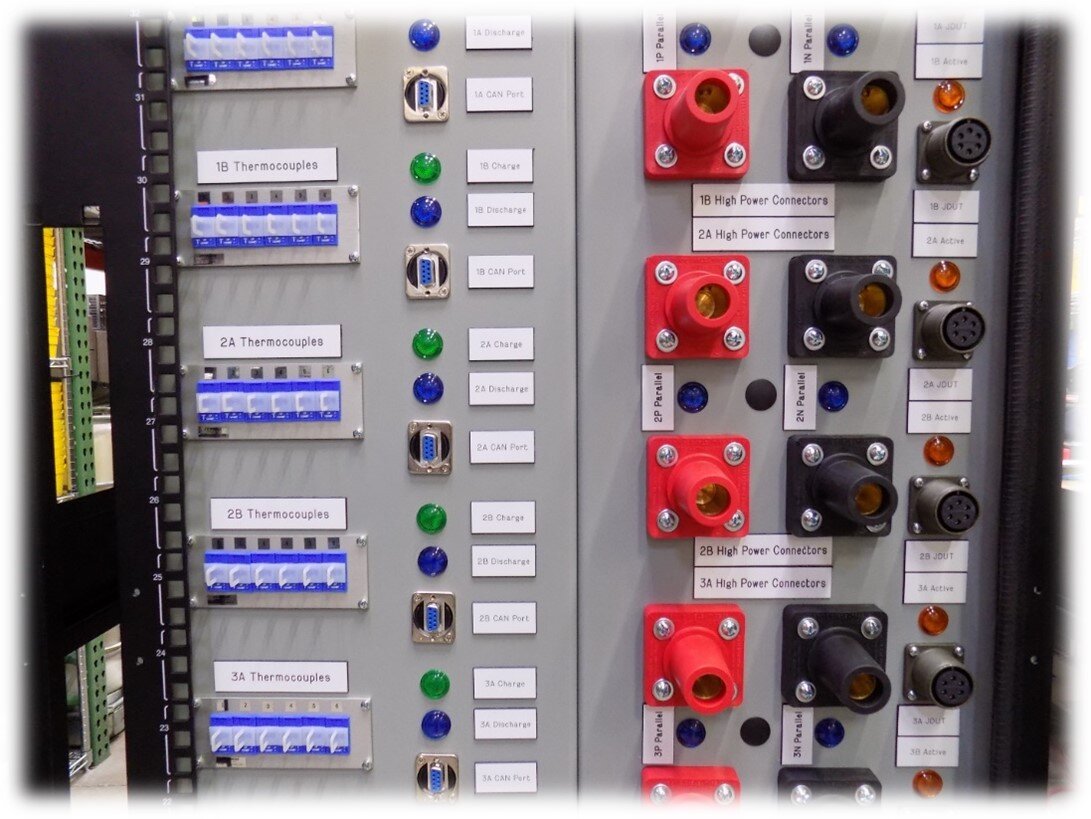
- Safety relays
- Fan cooling
- Safety interlocks
- Door proximity sensors
- Two E-STOP buttons (one remote E-STOP)
- External interlock inputs/outputs
- Hardware and software inputs to interlock loop
Software Architecture
DMC employed our Flex Framework, NI VeriStand, and NI TestStand for this test system. DMC’s Flex Framework is a collection of common tools and standard resources that our team has compiled over many years of seeing common application requirements. Engineers can draw from this collection while designing applications, therefore greatly cutting down development time.
Developed entirely in LabVIEW, the framework is open source and easily extensible. Additionally, DMC provided the source code for the application to the customer, enabling them to further customize the test system and have true ownership of the equipment.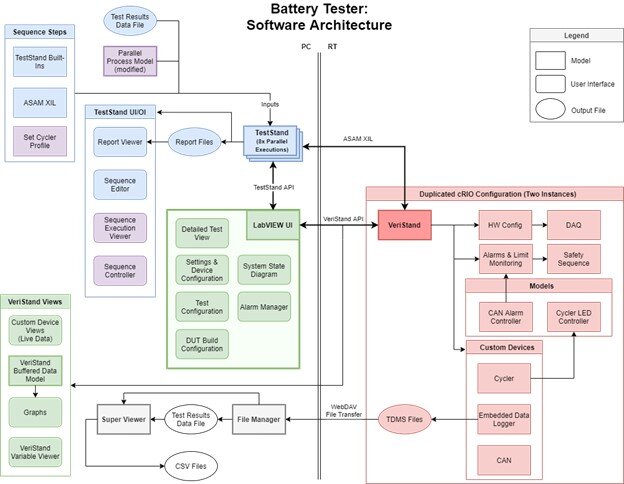
VeriStand provides many benefits including:
- Built-in deterministic real-time data acquisition and control
- Integration with LabVIEW and TestStand
- Powerful logging and alarming capabilities
- Highly customizable via custom devices and models
TestStand provides many benefits including:
- Sophisticated sequencing capabilities and flow control
- Parallel execution models
- Flexible user permissions functionality
- Customizable reporting features
- Comprehensive debugging features
Parallel Cycler Control
The application exercises battery packs through charging and loading cycles that mirror real-world operating scenarios, as defined by voltage, current, or power profiles. Regenerative Keysight cyclers were used either individually or in parallel to achieve proper power resources. The cRIO controllers’ digital IO modules actuated high-power contractors in tandem with jumpering high-power busses between cyclers, therefore achieving parallel configuration.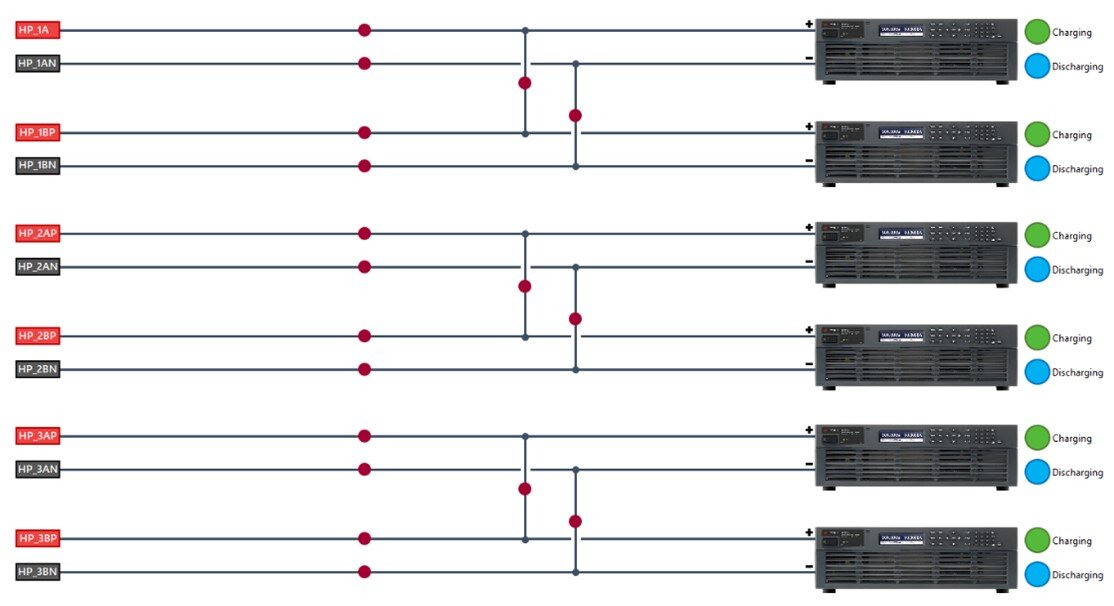
Long-Term Testing
To meet the client’s requirement of long-term testing, DMC implemented robust test persistence logic. This included handling for system power loss, communication loss, and many other failure scenarios.
Logging and Reporting
TestStand and Veristand provided similar, but distinct functionalities. TestStand allowed custom reports to be generated that summarized the test results, while VeriStand created detailed time-series data logs at varying sample rates—which can be changed dynamically by the test sequence itself.
Project Outcome
DMC delivered a battery test system capable of testing either eight batteries using one cycler each, or four batteries using two cyclers each in parallel configuration for higher current and power capability.
Learn more about DMC’s National Instruments expertise.